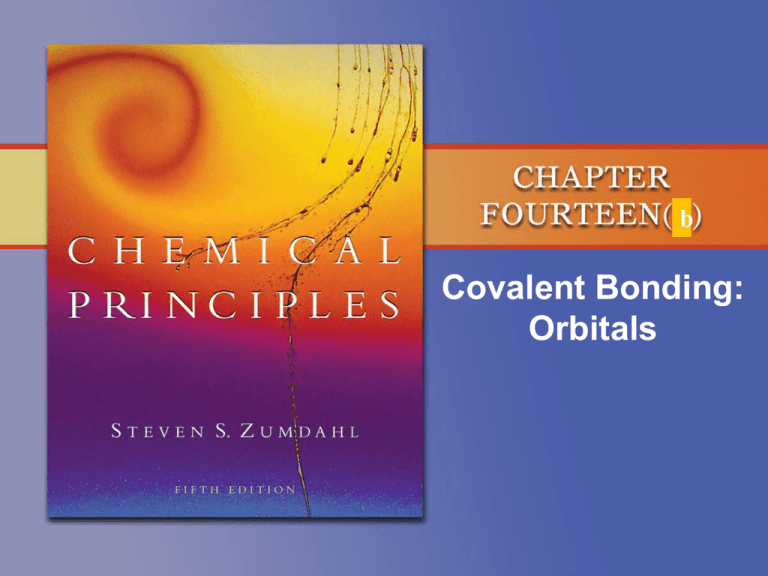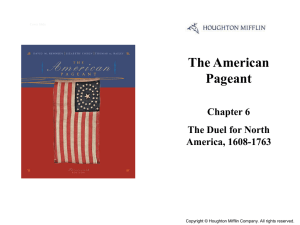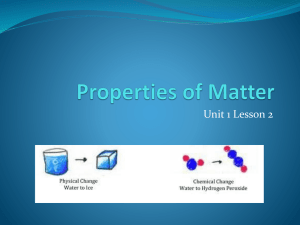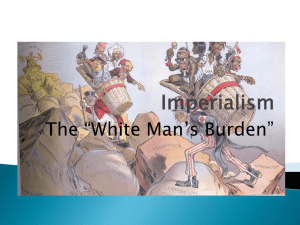
b
Covalent Bonding:
Orbitals
Figure 13.1: (a) The interaction of two hydrogen atoms
(b) Energy profile as a function of the distance
between the nuclei of the hydrogen atoms.
Copyright © Houghton Mifflin Company. All rights reserved.
14a–2
Figure 13.1: (a) The interaction of two hydrogen atoms
(b) Energy profile as a function of the distance
between the nuclei of the hydrogen atoms.
Copyright © Houghton Mifflin Company. All rights reserved.
14a–3
Figure 14.25: The combination of hydrogen
1s atomic orbitals to form MOs
Copyright © Houghton Mifflin Company. All rights reserved.
14a–4
Copyright © Houghton Mifflin Company. All rights reserved.
10.6
14a–5
- (- sign flips phase of
the sound wave function)
-=0
Auto mufflers use destructive interference
of sound waves to reduce engine noises.
Copyright © Houghton Mifflin Company. All rights reserved.
14a–6
Bose is
$200. Want to
do it yourself?
See Web site.
http://www.headwize.com/projects/noise_prj.htm
Copyright © Houghton Mifflin Company. All rights reserved.
14a–7
Copyright © Houghton Mifflin Company. All rights reserved.
14a–8
An analogy between light waves and atomic wave functions.
NOTE: +/- signs show
PHASES of waves, NOT
CHARGES!
Amplitudes of wave
functions added
Amplitudes of wave
functions subtracted.
Copyright © Houghton Mifflin Company. All rights reserved.
14a–11
Figure 14.26: (a) The MO energy-level diagram for
the H2 molecule (b) The shapes of the Mos are obtained
by squaring the wave functions for MO1 and MO2.
Copyright © Houghton Mifflin Company. All rights reserved.
14a–12
Figure 14.27: Bonding and anitbonding MOs
Copyright © Houghton Mifflin Company. All rights reserved.
14a–13
Figure 14.28: MO energy-level diagram
for the H2 molecule
# ANTIBONDING e’s = 0
# BONDING e’s = 2
Bond order = ½(2-0) = 1
Copyright © Houghton Mifflin Company. All rights reserved.
14a–14
Figure 14.29: The MO energy-level
diagram for the He2 molecule
# ANTIBONDING e’s = 2
# BONDING e’s = 2
Bond order = ½(2-2) = 0
Copyright © Houghton Mifflin Company. All rights reserved.
14a–15
Figure 14.29: The MO energy-level
diagram for the He2 molecule
Copyright © Houghton Mifflin Company. All rights reserved.
14a–16
Figure 14.30: The MO energy-level diagram
for the He2+ ion.
# ANTIBONDING e’s = 1
# BONDING e’s = 2
Bond order = ½(2-1) = ½
Copyright © Houghton Mifflin Company. All rights reserved.
14a–17
Figure 14.31: The MO energy-level
diagram for the H2+ ion
Copyright © Houghton Mifflin Company. All rights reserved.
14a–18
Figure 14.32: The MO energy-level diagram
for the H2- ion
Copyright © Houghton Mifflin Company. All rights reserved.
14a–19
Copyright © Houghton Mifflin Company. All rights reserved.
14a–20
Figure 14.33: The relative sizes of the lithium
1s and 2s atomic orbitals
Copyright © Houghton Mifflin Company. All rights reserved.
14a–21
Figure 14.34: The MO energy-level diagram
for the Li2 molecule
Copyright © Houghton Mifflin Company. All rights reserved.
14a–22
Figure 14.35: The three mutually perpendicular
2p orbitals on two adjacent boron atoms.
Copyright © Houghton Mifflin Company. All rights reserved.
14a–23
Figure 14.37: The expected MO energy-level
diagram for the combustion of the 2P orbitals
on two boron atoms.
Copyright © Houghton Mifflin Company. All rights reserved.
14a–24
Figure 14.36: The two p oribitals on the boron
atom that overlap head-on combine to form
bonding and antibonding orbitals.
Copyright © Houghton Mifflin Company. All rights reserved.
14a–25
Figure 14.36: The two p oribitals on the boron
atom that overlap head-on combine to form
bonding and antibonding orbitals.
Copyright © Houghton Mifflin Company. All rights reserved.
14a–26
Figure 14.37: The expected MO energy-level
diagram for the combustion of the 2P orbitals
on two boron atoms.
Copyright © Houghton Mifflin Company. All rights reserved.
14a–27
Figure 14.37: The expected MO energy-level
diagram for the combustion of the 2P orbitals
on two boron atoms.
Copyright © Houghton Mifflin Company. All rights reserved.
14a–28
Figure 14.37: The expected MO energy-level
diagram for the combustion of the 2P orbitals
on two boron atoms.
Copyright © Houghton Mifflin Company. All rights reserved.
14a–29
Figure 14.38: The expected MO energy-level
diagram for the B2 molecule
Copyright © Houghton Mifflin Company. All rights reserved.
14a–30
Figure 14.40: The correct MO energy-level
diagram for the B2 molecule.
Copyright © Houghton Mifflin Company. All rights reserved.
14a–31
Figure 14.39: An apparatus used to measure
the paramagnetism of a sample
Copyright © Houghton Mifflin Company. All rights reserved.
14a–32
Figure 14.41: The MO energy-level diagrams, bond
orders, bond energies, and bond lengths for the
diatomic molecules, B2 through F2.
Copyright © Houghton Mifflin Company. All rights reserved.
14a–33
Figure 14.42: When liquid oxygen is poured into the
space between the poles of a strong magnet, it remains
there until it boils away.
Source: Donald Clegg
Copyright © Houghton Mifflin Company. All rights reserved.
14a–34
Figure 14.43: The MO energy-level diagram
for the NO molecule
Copyright © Houghton Mifflin Company. All rights reserved.
14a–35
Figure 14.44: The MO energy-level diagram
for both the NO+ and CN- ions
Copyright © Houghton Mifflin Company. All rights reserved.
14a–36
Figure 14.45: A partial MO energy-level
diagram for the HF molecule
Copyright © Houghton Mifflin Company. All rights reserved.
14a–37
Figure 14.46: The electron probability distribution
in the bonding MO of the HF molecule
Copyright © Houghton Mifflin Company. All rights reserved.
14a–38
Spectroscopy
Copyright © Houghton Mifflin Company. All rights reserved.
14a–39
Electromagnetic spectrum
Copyright © Houghton Mifflin Company. All rights reserved.
14a–40
(wavelength) x (frequency) = speed [m/s]
Energy
Per photon:
E=hν
λν = c [108 m/s]
Copyright © Houghton Mifflin Company. All rights reserved.
14a–42
Electromagnetic spectrum
ν
Copyright © Houghton Mifflin Company. All rights reserved.
λ
14a–43
WHAT MAKES A MOLECULE ABSORB LIGHT?
When should you push?
AT THE RESONANT
FREQUENCY
Copyright © Houghton Mifflin Company. All rights reserved.
14a–44
AT THE RESONANT
FREQUENCY
λν=c
14
* Electronic transitions: ~ 6 x 10
500 nm (UV-VIS)
Copyright © Houghton Mifflin Company. All rights reserved.
sec.
14a–45
Figure 14.55: The molecular orbital diagram
for the ground state of NO+
Copyright © Houghton Mifflin Company. All rights reserved.
14a–46
AT THE RESONANT
FREQUENCY
* Electronic transitions: ~ 6 x 10
500 nm (UV-VIS)
λν=c
14
sec.
* Nuclear vibration: ~ 3 x 1013 sec.
10,000 nm (IR)
* molecular rotation:
microwaves
Copyright © Houghton Mifflin Company. All rights reserved.
14a–47
Copyright © Houghton Mifflin Company. All rights reserved.
14a–48
What makes a molecule absorb light?
[cm-1] = 1/λ = ν/c =E/hc
Figure 14.60: The three fundamental
vibrations for sulfur dioxide
Copyright © Houghton Mifflin Company. All rights reserved.
14a–50
Copyright © Houghton Mifflin Company. All rights reserved.
14a–51
What makes a molecule absorb light?
3200 cm−1 broad, strong O-H stretch (alcohols)
3000 cm−1 broad, medium O-H stretch (carboxylic acids)
1200 cm−1 strong, O-H bending
2800 cm−1 strong, C-H stretch
1400 cm−1 variable, C-H bending
1700 cm−1 strong, C=O stretch
1200 cm−1 strong, C-O stretch
What makes a molecule absorb light?
Figure 14.61: The infrared spectrum of
CH2Cl2.
Copyright © Houghton Mifflin Company. All rights reserved.
14a–54
What makes a molecule absorb light?
Figure 14.52: Schematic representation of
two electronic energy levels in a molecule
Copyright © Houghton Mifflin Company. All rights reserved.
14a–56
Figure 14.53: The various types of
transitions are shown by vertical arrows.
Copyright © Houghton Mifflin Company. All rights reserved.
14a–57
Figure 14.54: Spectrum corresponding to the
changes indicated in Fig. 14.53.
Copyright © Houghton Mifflin Company. All rights reserved.
14a–58
The molecular
structure of
beta-carotene
Copyright © Houghton Mifflin Company. All rights reserved.
14a–59
Figure 14.57: The electronic absorption
spectrum of beta-carotene.
Copyright © Houghton Mifflin Company. All rights reserved.
14a–60
VIBRATIONS
VIBRATIONS
Figure 14.58: The potential curve for a
diatomic molecule
Copyright © Houghton Mifflin Company. All rights reserved.
14a–63
Figure 14.59: Morse energy curve for a
diatomic molecule.
Copyright © Houghton Mifflin Company. All rights reserved.
14a–64
Figure 14.62: Representations of the two
spin states of the proton interacting
Copyright © Houghton Mifflin Company. All rights reserved.
14a–65
Figure 14.63: The molecular structure of
bromoethane
Copyright © Houghton Mifflin Company. All rights reserved.
14a–66
Figure 14.64: The expected NMR
spectrum for bromoethane
Copyright © Houghton Mifflin Company. All rights reserved.
14a–67
Figure 14.65: The spin of proton Hy
can by "up" or "down"
Copyright © Houghton Mifflin Company. All rights reserved.
14a–68
Figure 14.66:
The spins for
protons Hy
can be "up",
can be
opposed (in 2
ways) or can
both be
"down"
Copyright © Houghton Mifflin Company. All rights reserved.
14a–69
Figure 14.67:
The spins for the
protons Hy can
by arranged as
shown in (a)
leading to four
different
magnetic
environments
Copyright © Houghton Mifflin Company. All rights reserved.
14a–70
Figure 14.68: The NMR spectrum of
CH3CH2Br (bromoethane) with TMS reference
Copyright © Houghton Mifflin Company. All rights reserved.
14a–71
Figure 14.69: The molecule (2-butanone)
Copyright © Houghton Mifflin Company. All rights reserved.
14a–72
Figure 14.70: A technician speaks to a patient
before heis moved intot eh cavity of a magnetic
resonance imaging (MRI) machine.
Copyright © Houghton Mifflin Company. All rights reserved.
14a–73
Figure 14.71: A colored Magnetic Resonance
Imaging (MRI) scan through a human head,
showing a healthy brain in side view.
Copyright © Houghton Mifflin Company. All rights reserved.
14a–74







